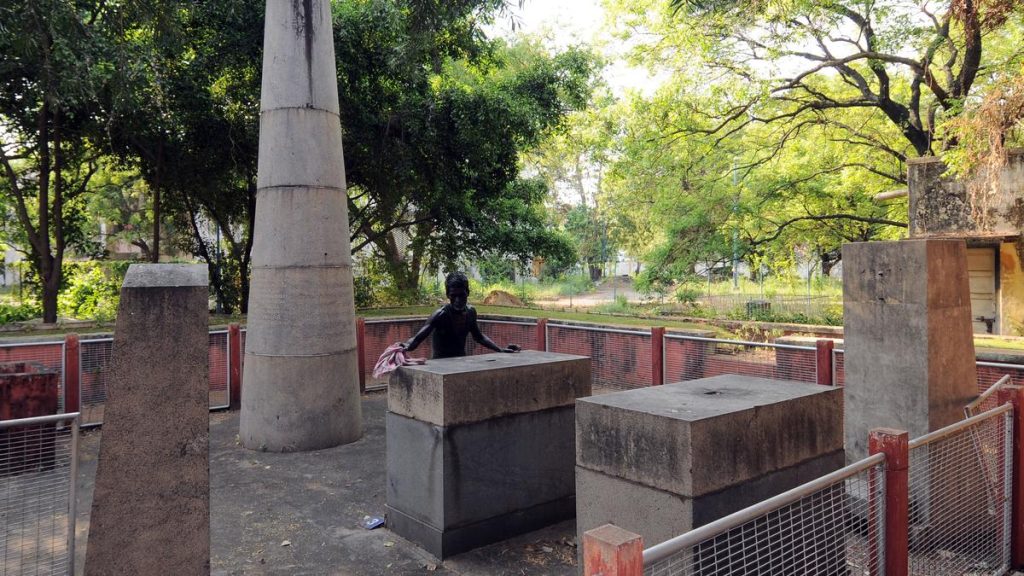
Structures erected in 1792 at the astronomical observatory, now RMC. It later became a part of the IMD. File photo
| Photo Credit: M. VEDHAN
The Regional Meteorological Centre (RMC), Chennai, which serves as the headquarters for weather services in southern States and two Union Territories, will strengthen its observation network across south India.
The RMC has come a long way since its inception as an astronomical observatory in 1792. It has expanded its horizon and improved weather services over the decades. It later became a part of the India Meteorological Department (IMD), which is completing 150 years on January 15.
Given the growing challenges in weather forecasts owing to climate change and global warming, the RMC is preparing to equip itself with an additional observation network to improve precision of its forecasts under ‘Mission Mausam’.

S. Balachandran, Additional Director-General of Meteorology, Chennai, said the RMC was planning to install wind profilers at various locations in south India, including Kozhikode, RMC Chennai, Amaravati, Hyderabad, Bengaluru and Thiruvananthapuram.
The equipment would use radio or sound waves to detect wind speed and direction at various elevations in the atmosphere.
The RMC would also add a minimum of four radiosonde stations, and pilot balloon observatories, including in Kozhikode, Bengaluru, Salem and Kanniyakumari, for upper air observations. There are nearly 14 radiosonde observatories in southern States now.
Tamil Nadu, which has four radars, would soon get two more in Salem and Kanniyakumari. At present, there are 56 RMC-owned surface observatories in southern States. “We have signed a memorandum of understanding with Southern Railway to set up automatic rain gauges in Palani and Thoothukudi,” Mr. Balachandran added.
Besides high-speed wind recorders, there are 80 ARGs and 68 automatic weather stations in Tamil Nadu and Puducherry alone.The RMC’s genesis dates to a private observatory started by William Petrie at his house in Egmore in 1786. A 15-foot granite pillar in the rear of the RMC’s Nungambakkam office stands testament to establishment of first astronomical observatory by the East India Company and Charles Oakley, the then Governor of Madras. The pillar has inscriptions in Tamil, Telugu and Urdu on the purpose of the observatory, and in memory of its architect Michael Topping.
Tracing the history of the RMC, Mr. Balachandran said that its primary purpose was to promote knowledge in astronomy. It later expanded to weather services.
A site for an observatory was initially identified in Vepery in 1789, and the increase in real estate prices led to finding two other places in Luz and Nungambakkam. It was finally shifted to Nungambakkam in 1792.
“We still have records of cyclones from 1639 and records of cyclones in Arabian sea in a book on cyclone memoirs from 1648 to 1889. It is said that forecast centres functioned at Avadi and shifted to St. Thomas Mount in 1944 to cater to Royal Air Force during the Second World War. The RMC shifted to Nungambakkam campus in 1948..,” he said.
Pointing out that RMC had records of extreme weather events in October 1846 in then Madras, he said it was preparing to meet the challenges posed by climate change a
Published – January 08, 2025 10:13 pm IST








